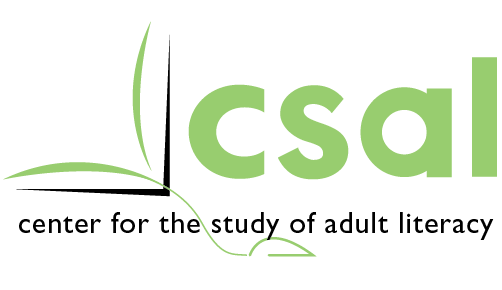Year Two Summary
Each year, nearly 3 million Americans enroll in adult literacy programs to improve their basic skills, and some estimates suggest the need is even greater. Adults in these programs want to increase their literacy skills to improve aspects of their work, family, social, and civic lives. However, we do not completely understand their underlying reading-related strengths and weaknesses, nor do we know the best curricula and teaching approaches to help them reach their reading goals. The focus of our center is to address these areas by attending to the following goals: 1) To collect data on the underlying cognitive and motivational processes that contribute to or impede the reading development of adults who read between the 3.0 and 7.9 grade equivalency levels; 2) To develop and evaluate a multiple component reading intervention for adults who read between the 3.0 and 7.9 grade equivalency levels; 3) To design and collect data from supplemental studies that are aligned with the overall goals of CSAL and are relevant to significant issues in adult education; 4) To engage in national leadership activities that serve the needs of adult education researchers, policymakers, practitioners, and stakeholders; and 5) To disseminate findings of this work.
This report covers our activities from June 1, 2013 through May 31, 2014. During this time period, we engaged in the following activities: a) Testing, b) Design of the intervention, c) Preparation for feasibility studies, and d) Other center activities. During this reporting period, 281 adult literacy students have either completed or are in the process of completing testing. The majority of our participants are female, native speakers of English, with a mean age of 38 years. A cursory look at the mean performance of the participants indicates that they are deficient in all tested domains. Specifically, their mean grade equivalency (GE) performance ranges from a low of k.7 GE (blending subtest of the CTOPP) to a high of 7.1 GE on sight word reading (TIWRE). Their mean age equivalency (AE) ranges from a low of 8.11 AE on the CASL grammatical morphemes subtest and the CELF4 recalling sentences subtest to a high of 11.6 AE on the CELF4 Word Receptive and Word Definitions subtests.
Thirty face-to-face lessons of Adult PACES and 20 AutoTutor lessons have been completed (with further lessons at different stages of development). The plans for Adult PACES have continued to be similar to our plans described in last year’s report. However, we have decided that the Adult PHAST program will have 30 decoding lessons which can be accelerated for learners who require less. The three strategies in Adult PHAST are Sounding Out (a straight phonological decoding strategy but with proper sound blending procedures), Peeling Off (acquisition of prefixes and affixes and their segmentation to provide a smaller root within multisyllabic words), and Vowel Alert (trying out different vowel pronunciations according to their frequency of use in English).
Examples of other center activities described in this report include development of a Web-based text repository, creation and dissemination of an adult literacy practitioner survey, formation of and implementation of a technical working group meeting, and presentations at conferences.
